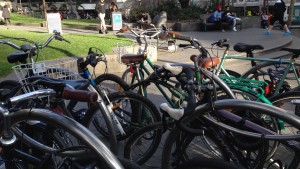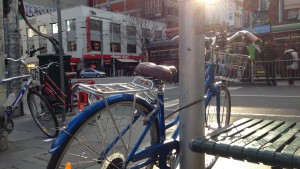Finding it really difficult that there are no tutorials for anything about Korsakow (except on the company’s own website…) I feel like I’m just stabbing around in the dark and I need some further instruction and tutorials to watch ugh. It seems like everyone in the class has taken to the program so naturally and I’m stuck on struggle street….. I just can’t wrap my head around exactly what I’m doing wrong, all I know is my brain REALLY doesn’t like ‘keywords’
Monthly Archives: July 2015
Pop cinema week 2: seminar summary
150-250 word summary.
- we did our seminar summaries but i was away… they said they did high culture, folk culture, pop culture. elite culture etc. things can morph to different cultures. (get definitions)
- mass culture: (get definition) film as a mass cultural product. industrial revolution makes mass production possible. it affects the population by making people have similar experiences, in terms of the movement of people to the cities to find work.
- the ‘masses’ are potential audiences for cinema. sometime thought to have agency to do with demand, other idea is that masses are passive at the same time. double characterisation of the masses.
- criticisms of mass culture: REPETITIVE AND ALL THE SAME excludes other cultures, everything ends up being the ‘same… what people like (e.g. show types), do they manipulate audiences??? “feel like a proud american” from war- subjected to idealogical, advertising (product placement), hollywood is a money seeking industry. it is cheaper to mass produce because of production costs and factory line style. one studio rather than many. it is faster too. repetition and variation (for different audiences). eg. variations of cars. more luxurious the car, more expensive. targeted for women (always in the city) bag holders, small cars etc….. to hollywood film: all have hollywood stars (familiarity and know the genre), big budgets, music, genre, marketing (trailers and posters etc), resolved, rounded ending.
- classical hollywood: period between 30’s and 40’s… why does it end in the 40’s? because gov steps in to change how ‘system’ works. what system is classical hollywood? ‘studios are vertically integrated’. paramount >production>distribution>exhibition. called vertical because one company owns all. complicated by what they can achieve. if paramount owns the means of production… what do they own? PRODUCTION: cameras, tech equipment, directors(contracted), stars (actors had contracts up to 7 years), writers (contracted), composers (sound), producers (contracted), costume department, sets and soundstages, set designers,… hollywood as the “dream factory”, waiting for the next project. can recycles. DISTRIBUTION: package film known as “block booking” which maximises profits: crappy outweigh the risk of one failing), EXHIBITION: theatres (whats showing when: first screening, second screening, third screening and also the ticket pricing). control the concession stands
- when gov came along, said we need a free market, can’t have the vertical line anymore. so production, distribution and exhibition could be entered by “smaller players”.
- “Sullivans travels is a reflexive exploration of the conditions of protection of hollywood and its relation of its audiences” Do you agree? Why? It’s a film about film, and it is overtly discussing film not trying to conceal. Reflexive is self aware.
Feeling so relieved to get some structure into my uni life. I’ve been pretty lazy in getting myself organised for upcoming projects, and today I printed off all my course guides and wrote due dates into my big RMIT calendar. Sounds simple, but I really love being able to see the big picture for the semester and it stops me from feeling overwhelmed. *Mental note to self to do this every semester*
Korsakow
We got introduced to our new interface design software today, Korsakow. It is a German program that allows the designer to create documentaries that may be viewed on the internet, but that involves user interaction and allows them to have control over their viewing of the doc (kinda like “choose your own adventure”.. But NOT, we were told it is NOT that at all). It looks completely different to an form of digital technology that I’ve worked with before (and ill admit, pretty confusing) but I’m excited to learn some new things and hopefully create a very unique new form of I-documentary. Sometimes I find learning new technology really challenging, so I hope in doing this course, I develop some skills with some new forms of media production and also end up coming up with some good problem-solving strategies for when things become difficult.
We will be designing the interface to engage users and motivate them to continue to keep viewing the documentary. So here’s the big question… I wonder how we can engage and motivate users to watch something about cycling in Melbourne? Do we need each video to be rewarding? To have continuity? Or would it work better with the software if they were self-contained videos that were all interrelated… Hmm need to play around to work it all out… For me personally, I believe that users want to be rewarded for what they are seeing. Like watching a television show, the show will always cut to an add break to keep the viewer on the edge of their seat and to engage with them enough that they continue to keep watching. I think my group has decided on user demographic being female, adolesent Melbournians. There’s a lot to think about, but I would we have to remember that an online digital product is very different to a traditional documentary.
New Doco: Week 1
Today was the first studio for media 2, new doco. We went to a cafe and ventured off in pairs to collect photos and audio of anything to do with cycling.
We walked around with Bliss and Dominic and for some reason all decided to take portrait photos. Here are a few of the landscape ones I got though:




